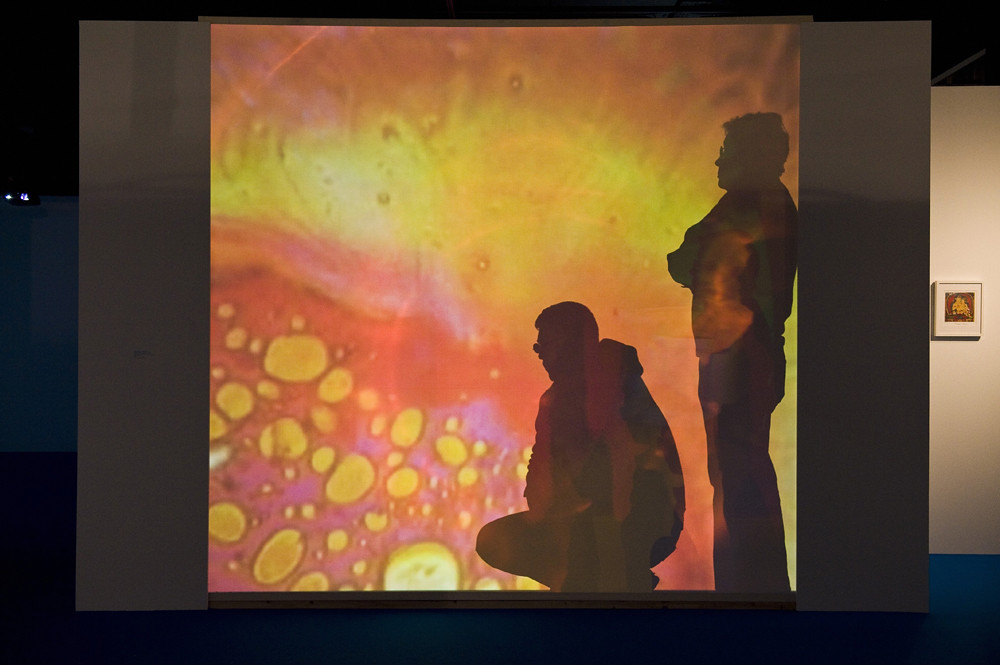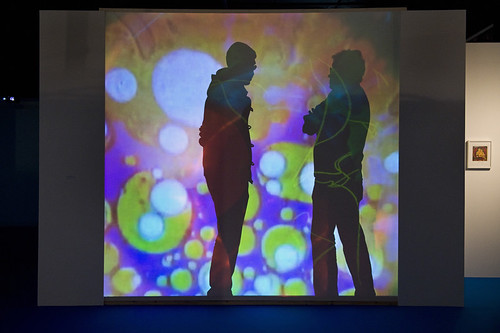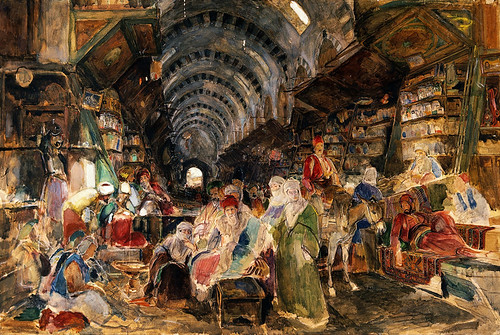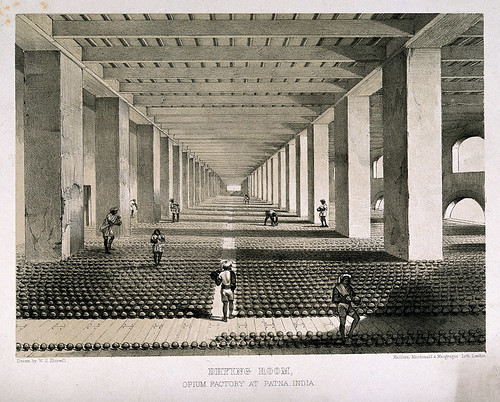Thursday, 2:59pm
25 November 2010
Spinning, swirling, reeling
This history of mind-altering drugs favours the eye over the brain

‘High Society’, the Wellcome Collection’s latest exhibition, aims to chart a 2000-year history of mind-altering drugs, legal and otherwise, writes Rosie Walters.
A multimedia show, it takes you from prohibition posters (above) and engravings of opium factories (bottom) to Tracy Moffat’s black and white portraits exploring hallucinations and a video projection of Turkish opium fields by Mustafa Hulusi (below).
At the centre of the show is The Joshua Light Show (top and below) by Joshua White and Seth Kirby, a miniature version of the oil and coloured light shows used as a psychedelic backdrop for performances in the late 1960s and early 70s (and the source of Barney Bubbles’ adopted name). Projected into a darkened room at the heart of the exhibition space, the swirling shapes create a multisensory experience that helps you imagine what an LSD trip might be like – and leaves you feeling extremely dizzy.
‘High Society’ mixes historical representation of drug use, such as pictures of Chinese opium dens or bottles of nineteenth-century cocaine eyedrops, with recent scientific research. The images showing what happens to spider web patterns after the spiders have been given drugs (below), a NASA experiment from the 1990s, are simple but striking – and a good contrast to the objects in cases that are dotted around the rest of the exhibition.
This is an exhibition that relies on visual impact. With so many pictures and installations, there is little room for explanation, and the few charts of facts and figures about the modern drugs trade are hidden away behind partitions. The accompanying ‘guide’ is no more forthcoming, with no page numbers and little clarification of objects or images.
Above: ’Blotter Art’ by John Lilly. Credit: Constance Lyttle.
But though you may not leave the exhibition with a complex knowledge of the history of drugs, you certainly will be reeling – this is a trip it might take some time to come down from.
‘High Society: Mind-Altering Drugs in History and Culture’ continues until 27 February 2011 at the Wellcome Collection, 183 Euston Road, London NW1 2BE (wellcomecollection.org).
All images courtesy of Wellcome Library / Wellcome Images.
Above: Burroughs Wellcome & Co’s ‘Forced March’ tabloids – derived from coca leaves. Credit: Royal Pharmaceutical Society of Great Britain. Below: J. F. Lewis’s watercolour ‘The Bazaar at Constantinople’ (1840-41) shows hookah smokers, a favourite theme in orientalist art. Bottom: lithograph showing the drying room in the opium factory at Patna, India, after W. S. Shirwell, ca. 1850.
Eye magazine is available from all good design bookshops and at the online Eye bazaar (above) where you can order subscriptions, single issues and back issues. The Autumn issue, Eye 77, is out now. See Eye before you buy on Issuu for a taste of its contents.
For regular updates, please sign up for the editor’s monthly newsletter.








